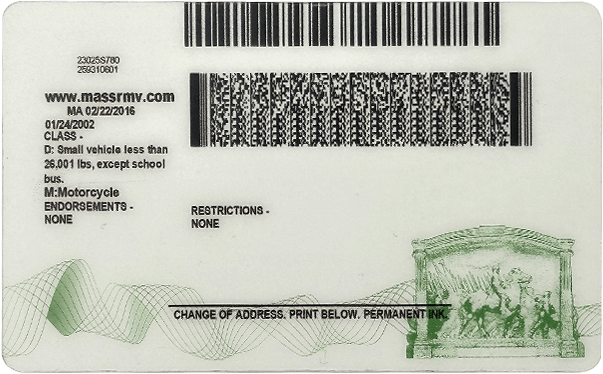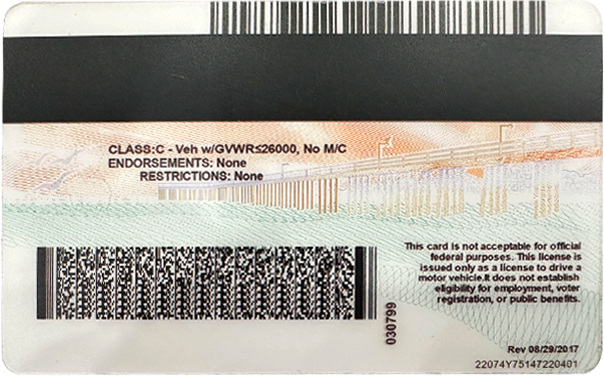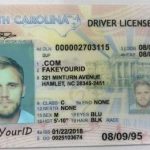Introduction
Jewelry stores handle valuable items, and ensuring the authenticity and identity of customers is crucial for various reasons. One common method they use to verify a customer’s identity is by checking their driver’s licenses. This practice helps prevent fraud, ensure legal compliance, and safeguard both the store and its clientele.
Initial Visual Inspection
The first step in the process of checking a customer’s driver’s license in a jewelry store is a visual inspection. Staff members will carefully look at the overall appearance of the license. They check for the proper size and shape. Most driver’s licenses follow standard dimensions, and any deviation could be a red – flag. For example, a license that is too small or too large might be a counterfeit.
They also examine the color and quality of the materials used. Real driver’s licenses are printed on high – quality paper or plastic with specific colors that are difficult to replicate. If the colors seem off, too faded, or overly vibrant in an unnatural way, it could indicate a fake. Additionally, they look for any signs of tampering, such as peeling, bubbling, or uneven surfaces on the license.

Verification of Personal Information
Once the physical appearance of the license has been inspected, the next step is to verify the personal information on it. The staff will compare the name on the license with the name provided by the customer during the transaction. This includes checking for any spelling discrepancies or differences in format. For instance, if the customer gives their name as “John Smith” but the license reads “Jonathan Smith,” it requires further investigation.
The date of birth on the license is also carefully checked. This is important not only to ensure the customer is of legal age to make certain purchases (such as high – value items or items that may require age verification), but also to cross – reference with other information provided by the customer. For example, if a customer claims to have graduated from a particular school in a year that doesn’t match their age on the license, it could be a cause for concern.
Another key piece of information is the address. Jewelry stores may compare the address on the license with the billing or shipping address provided by the customer. Inconsistencies here could signal potential fraud. For example, if the license shows an address in one state but the customer is trying to ship the jewelry to an address in a completely different state with no reasonable explanation, it might warrant further scrutiny.

Photo Comparison
A crucial part of the driver’s license check is comparing the photo on the license with the person standing in front of the jewelry store staff. This involves looking at facial features such as the shape of the face, the eyes, nose, and mouth. While people may change their hairstyle or appearance slightly over time, the basic facial structure remains relatively consistent.
Staff will also consider factors like the age and skin tone in the photo compared to the customer. If the photo appears to be of a much younger or older person, or if the skin tone is significantly different, it could be a sign of a non – genuine license. Additionally, they may check for any distinguishing marks, such as moles or scars, that are visible in the photo and on the customer’s face.
Security Features
Modern driver’s licenses are equipped with various security features to prevent counterfeiting. Jewelry store staff are trained to look for these features. One common security feature is holograms. These are three – dimensional images or patterns that are embedded in the license. When the license is tilted, the hologram should change and display different images or colors. If the hologram is missing, looks blurry, or doesn’t change as expected, it could be a fake.
Microprinting is another important security element. On real driver’s licenses, there are often tiny printed texts that are difficult to replicate accurately. These texts can usually be seen under magnification. Jewelry stores may use a magnifying glass to check for the presence and clarity of microprinting. If the microprinting is not present or is of poor quality, it raises suspicion about the license’s authenticity.
In some cases, driver’s licenses also have UV – reactive features. When exposed to ultraviolet light, certain parts of the license will glow or display hidden images. Jewelry stores may have UV – lights on hand to check for these features. If the license doesn’t show the expected UV – reactive elements, it could be a counterfeit.
Cross – Referencing with Databases (if applicable)
In some situations, jewelry stores may have access to databases that can be used to cross – reference driver’s license information. This could be especially true in cases where there are significant concerns about the authenticity of the license or the customer’s identity. These databases may contain information such as the date the license was issued, any previous addresses associated with the license holder, and any flags or warnings related to the license.
However, it’s important to note that accessing these databases usually requires proper authorization and compliance with privacy laws. Jewelry stores must ensure that they are following all legal requirements when using such databases to verify customer information. For example, they may need to obtain the customer’s consent before accessing certain sensitive information in the databases.
Common Problems and Solutions
-
Problem: Blurry or Damaged Photo
Sometimes, a driver’s license photo may be blurry due to poor printing or damage to the license. This can make it difficult to accurately compare the photo with the customer’s face.
Solution: In such cases, the jewelry store staff can ask the customer for additional forms of identification, such as a passport or a state – issued ID card. They can also try to have a more in – depth conversation with the customer to verify their identity based on other personal details they provide. -
Problem: Outdated License
Customers may present an expired or very old driver’s license. While an expired license may still be a valid form of identification in some cases, it can raise concerns about the accuracy of the information on it.
Solution: The store can request that the customer provide a more recent form of identification. If the customer claims that they are in the process of renewing their license, the store can document this information and may choose to proceed with the transaction if they are satisfied with other forms of verification, such as a credit card or utility bill in the customer’s name. -
Problem: Suspicious Name or Address Discrepancies
As mentioned earlier, differences in the name or address on the license and the information provided by the customer can be a cause for concern.
Solution: The store should have a calm and professional conversation with the customer to understand the reason for the discrepancies. For example, if the name difference is due to a recent marriage or name change, the customer can be asked to provide supporting documentation, such as a marriage certificate. If the address difference is because of a recent move, the customer may be able to provide a utility bill or other official document with the new address. -
Problem: Lack of Familiarity with Security Features
Some jewelry store staff may not be fully trained or familiar with all the security features of driver’s licenses in different states or countries. This can lead to uncertainty when trying to verify a license’s authenticity.
Solution: Regular training sessions should be conducted for all staff members on the latest security features of driver’s licenses. These training sessions can include hands – on demonstrations with real and fake licenses to help staff recognize the differences. Additionally, the store can create a reference guide or checklist for staff to use when checking driver’s licenses. -
Problem: Difficulty in Accessing Databases
If the jewelry store relies on database access for verification and encounters technical issues or lacks the proper authorization to access certain information, it can impede the identity – verification process.
Solution: The store should ensure that it has a reliable IT infrastructure in place to support database access. They should also work with the relevant authorities or service providers to obtain the necessary authorizations and permissions. In case of technical problems, they should have a backup plan, such as contacting the local DMV (Department of Motor Vehicles) or other relevant agencies directly to verify the license information.
Fake ID Pricing
unit price: $109
| Order Quantity | Price Per Card |
|---|---|
| 2-3 | $89 |
| 4-9 | $69 |
| 10+ | $66 |



